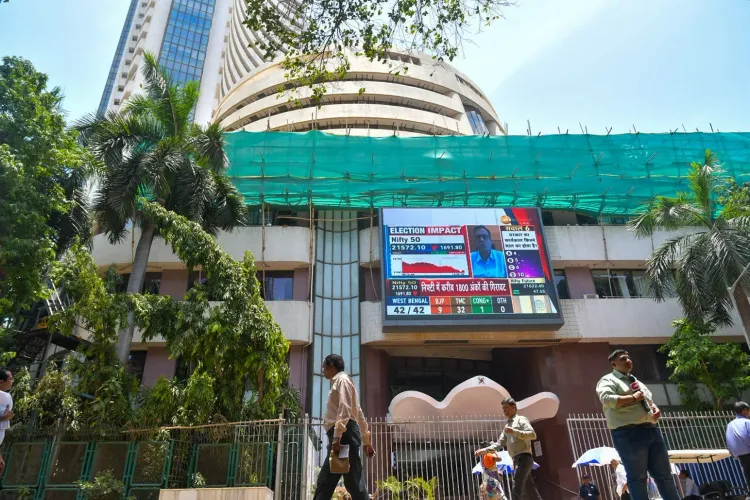What Should Investors Watch in the Upcoming Trade Week?

Synopsis
Key Takeaways
- Monitor US-India trade deal developments.
- Quarterly earnings reports from major companies are upcoming.
- Inflation data is crucial for market sentiment.
- Domestic resilience is indicated by strong GST collections.
- Investors should consider a defensive strategy.
Mumbai, Aug 10 (NationPress) Investors are advised to monitor the evolving situation surrounding the US-India trade agreement, upcoming quarterly earnings reports, tariff discussions, and inflation metrics in the approaching trading week, analysts highlighted on Sunday.
More than 1,400 companies, including those in the metals, energy, and pharmaceutical sectors, are set to announce their Q1 FY26 results next week, concluding the quarterly earnings season. Major players such as Grasim Industries, Hero MotoCorp, and India Lease Development are slated to report their earnings on August 11.
From a macroeconomic perspective, investors are particularly interested in the domestic CPI and WPI inflation figures, which are expected to be released on August 12 and August 14.
Previously, markets experienced a decline for the sixth consecutive week due to US President Donald Trump's unexpected declaration of a 50 percent tariff on Indian imports. The Nifty and Sensex indices dropped nearly one percent, closing at 24,363 and 79,857, respectively.
Foreign Institutional Investor (FII) selling continued throughout the week, reflecting broader risk aversion in emerging markets. Nonetheless, sustained buying from Domestic Institutional Investors (DIIs) helped to cushion the losses.
Domestic resilience is evident from robust July GST collections and improving PMI readings. However, rising input costs, inflationary trends, and vulnerabilities within the banking and IT sectors may limit potential gains.
According to Ajit Mishra from Religare Broking Ltd, "The Nifty's close below 24,450 has heightened the risk of further correction, with immediate support near 24,200. On the upside, resistance is anticipated in the 24,600–24,800 range, with a stronger barrier at 25,200."
"The broader market indices remain susceptible due to their higher beta to FII outflows. Any recovery is likely to be short-lived unless supported by diminished trade tensions and a reversal in FII inflows," he added.
In terms of sectors, domestic demand-driven areas like infrastructure, select autos, and rural-focused FMCG may exhibit relative resilience if macroeconomic conditions remain stable.
Analysts suggest that investors might consider a defensive-to-neutral approach, favoring firms with strong domestic earnings visibility and minimal tariff exposure, while also keeping cash reserves for opportunities during deeper market corrections.
aar/na








